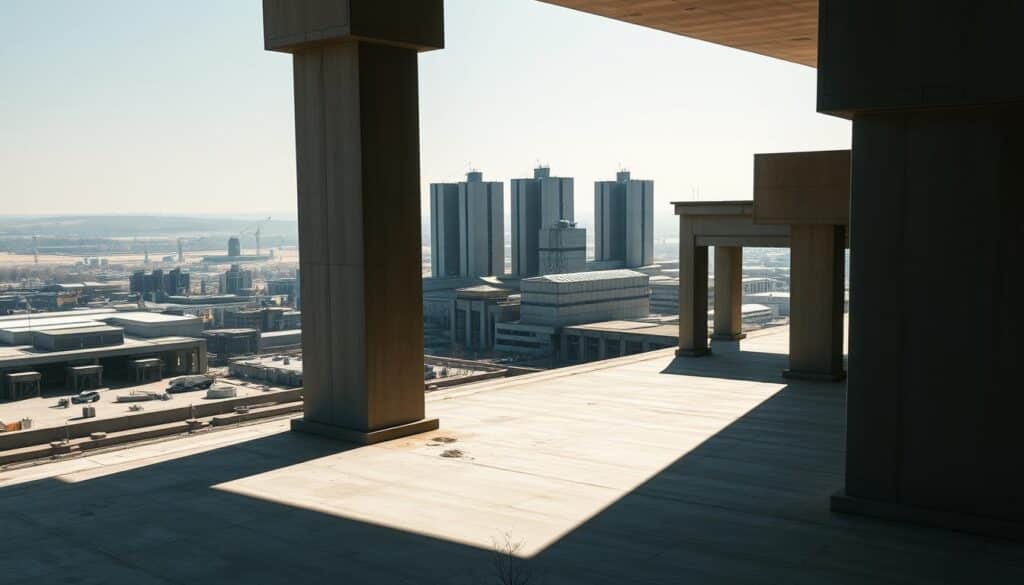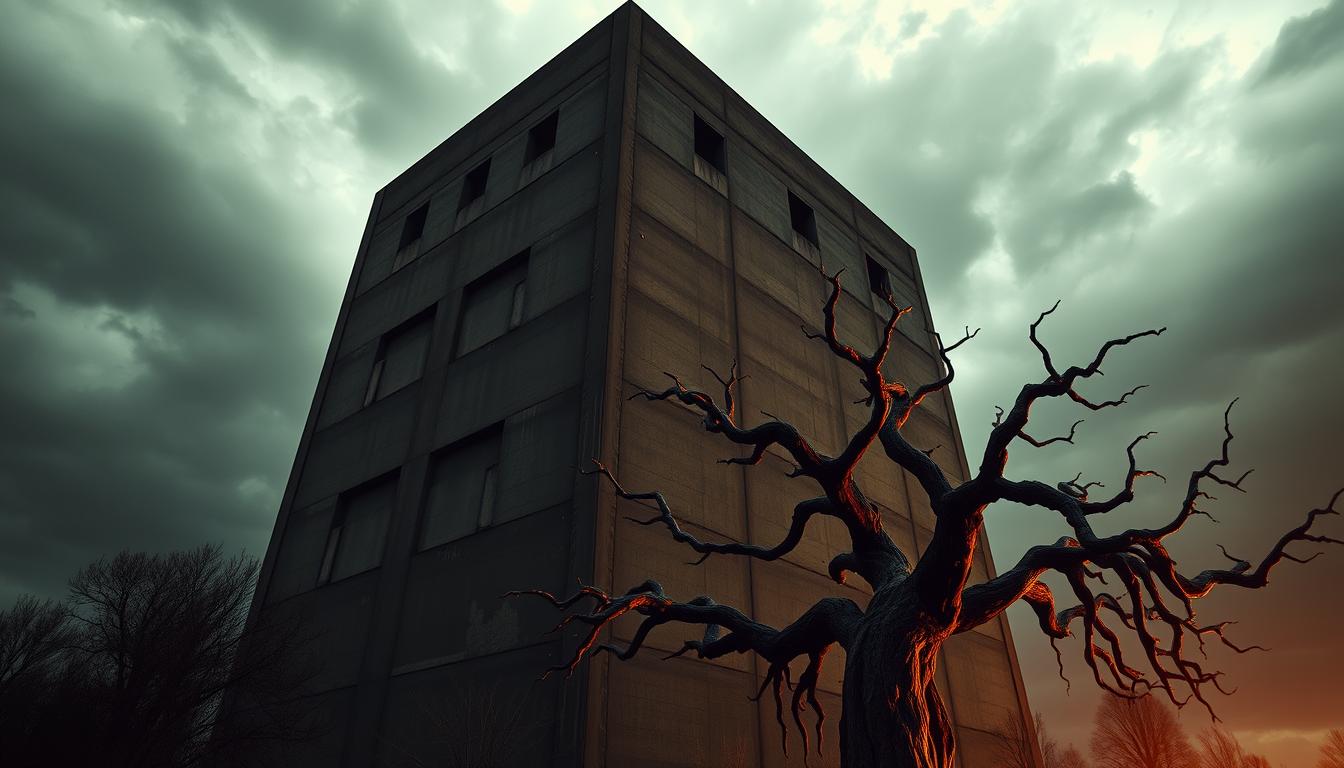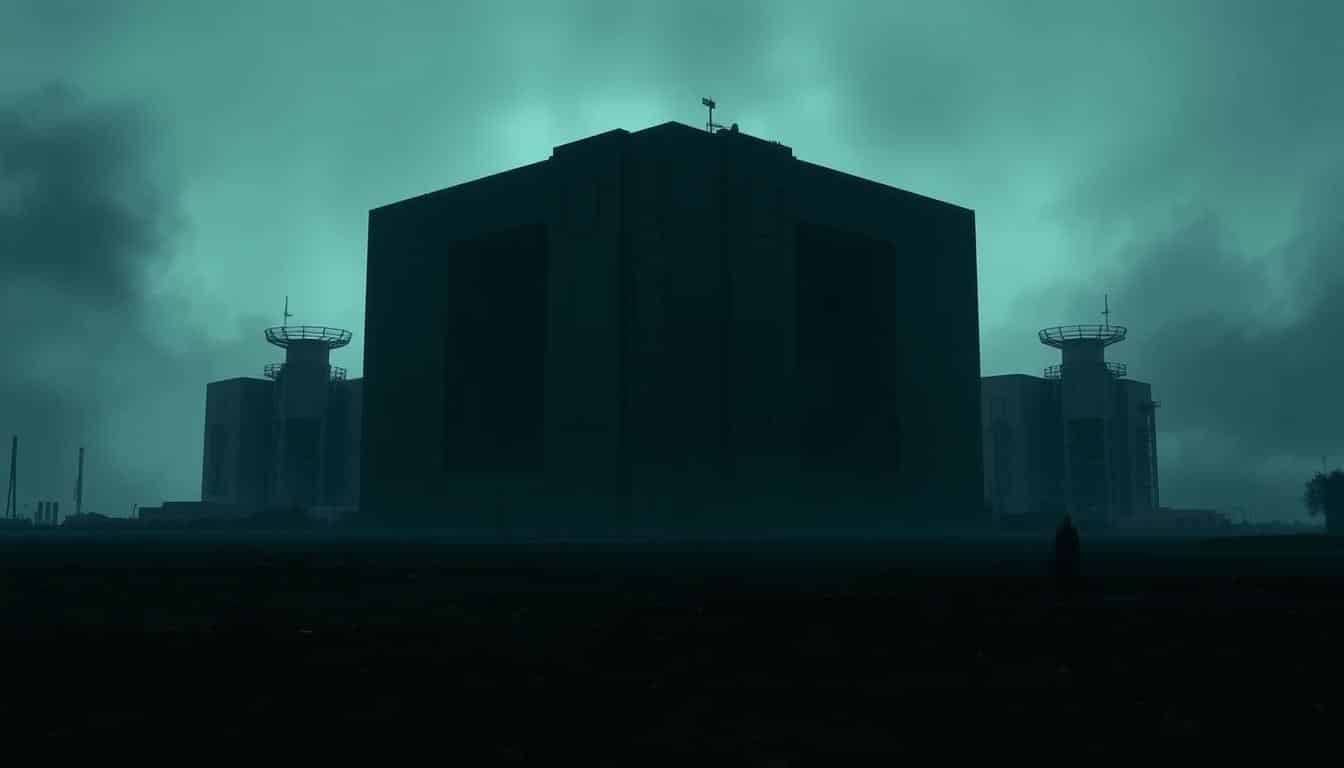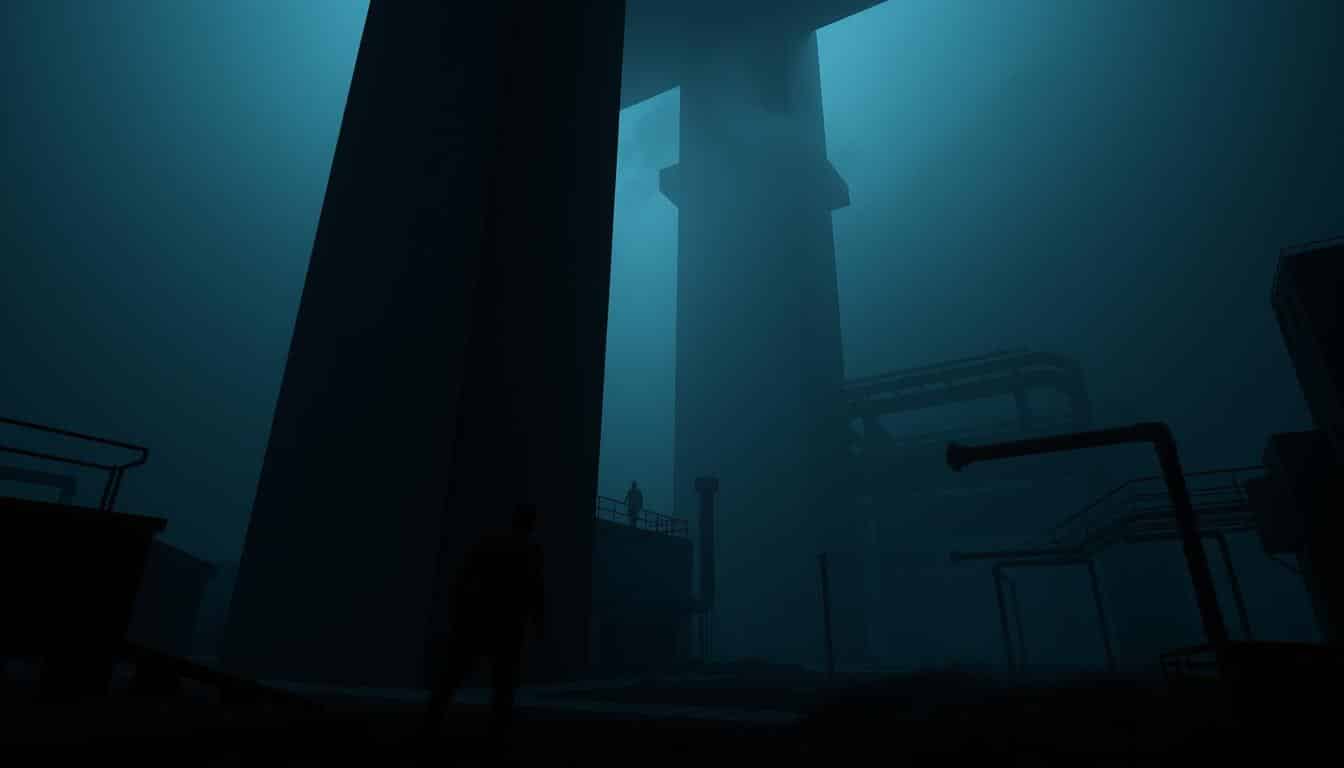Brutalist architecture is known for its bold, practical shapes and use of bare materials. It has become popular in video games. This style adds a unique look to digital design. It gives players new experiences that mix up the usual ways games are played.
As more games pick up brutalism, we see its key traits come alive in various games. This article will talk about what makes brutalist architecture stand out. We’ll see how it started and its impact on game design. And we’ll explore how it changes the way players experience stories and settings in games.
The Essence of Brutalist Architecture
Brutalist architecture is known for its raw, powerful look. It mainly uses raw concrete, called béton brut, and focuses on function rather than decoration. Starting in the late 1940s, this style aimed to change architecture. It liked simple shapes and showing off materials as they are. Brutalism showed the big changes in architectural history, reflecting new cultural and social ideas.
Characteristics of Brutalism
The characteristics of brutalism include:
- Raw concrete surfaces that show the material’s natural texture
- Bold geometric shapes, with a focus on lines and clear outlines
- Very few decorations, putting function first
- It mixes well with its surroundings, often standing out in cities
A Historical Overview
The idea of brutalism came after the war. Architects like Le Corbusier and Hans Asplund used cheap materials and new designs to make affordable houses and public buildings. This movement grew as a reaction to more ornate styles, moving towards a more honest expression that matched the era’s values.

Brutalist Architecture in Video Games
Digital brutalism combines architecture with video game design. It leads to eye-catching, interactive worlds in games. Using simple structures and basics, it reflects the main ideas of brutalism. This lets players form a strong bond with the game world. Games like “NaissanceE” and “Control” create spaces that spark feelings and thoughts.
Defining Digital Brutalism
Digital brutalism allows for exploration in games inspired by brutalist buildings. It is known for straightforward shapes, concrete looks, and a roughness seen in real brutalist structures. This style not only improves gameplay but also makes players think deeply about their in-game experiences. It focuses on making architecture a big part of the game’s story, offering more than just playing.
Influence of Brutalism on Game Design
Brutalist aesthetics significantly impact game design, especially in creating engaging environments. The bold visuals and raw features of brutalism shape player interactions with virtual worlds. They offer a special mix of form and function. This blend of striking architecture and game mechanics enhances how players explore and interact.
Creating Immersive Environments
Building immersive environments is about more than stunning graphics. It includes integrating design elements that reflect real brutalist buildings. By using stark lines, wide open spaces, and big geometries, games create a sense of awe and vulnerability. Players travel through these spaces, exploring and experiencing emotions.
Raw Materials and Textures
Texture is key to bringing brutalism’s feel into video games. Developers use materials like concrete, steel, and exposed brick to make their worlds feel real. Adding various textures gives depth and realism. Players can almost touch the rough surfaces and sense the atmosphere’s tension. This focus on materiality not only makes the visuals better but also supports the game’s story.
Key Examples of Brutalist Games
Several standout games perfectly capture brutalist architecture. They creatively use this style to make their gameplay and stories more engaging.
NaissanceE: A Journey Through Raw Aesthetics
NaissanceE leads players through unsettling yet stunning worlds. Its visuals dive deep into brutalist design. This invites players to see things differently and connect with their surroundings on a deeper level.
Control: The Monolithic Oldest House
In Control, the Oldest House is more than just a setting. It’s key to the story’s depth. Its changing architecture brings a feeling of alienation, pulling players in. The building’s unique character influences both gameplay and the narrative.
Investigating Kairo: Minimalism at its Best
Kairo’s minimalist design is hauntingly beautiful. It hints at ancient ruins and tells its story through exploration, not words. This simplicity showcases brutalist architecture’s raw impact in video games.
The Intersection of Art and Gameplay
Brutalist architecture is key in video games. It shapes how players feel and the game’s story. The stark, raw looks of brutalism make players engage deeply. They explore and make sense of their surroundings.
This artistic style does more than look cool. It blends visual appeal with the game’s interactive parts. This mix makes gaming richer and more fun.
How Architecture Shapes Player Experience
In games with brutalist design, it’s clear how architecture impacts play. Bold shapes and practical designs draw players in. They feel part of the game world as they explore.
Spaces are both intimidating and fascinating. This makes players connect more with the game’s world. Factors like:
- Spatial awareness that boosts smart play.
- Design choices that trigger deep feelings.
- Storytelling through the environment that improves the game.
Narrative through Design in Brutalist Games
Storytelling in these games is about space and structure. It’s not just talk; it’s the environment telling the story. With their raw and big style, these games often show:
- Big ideas through sharp contrasts.
- Buildings that mirror the characters’ journeys.
- Engaging interactions that draw players into the story.
Brutalism’s Resurgence in Multimedia
The rebirth of brutalism is making waves in many forms of multimedia, especially beyond video games. This trend marks a cultural shift where the rough, bold looks of brutalism deeply connect, creating an intense bond with today’s world. Artists in different fields are tapping into these raw, bold styles to evoke deep feelings and question old stories.
Brutalism Across Other Art Forms
In movies, brutalism’s look is key for telling powerful stories. Take “House of Leaves,” for example, which shows how this architectural style helps create scenes that feel expansive yet trapped at the same time. In the art world, artists use brutalism to start important conversations, with works that challenge what we’ve always accepted, using bare textures and stark differences.
Impact on Contemporary Culture
Brutalism in multimedia art reflects the complex ways we deal with emotions and big issues in society today. It mixes a bit of the old and the new, making audiences think about how the past and present collide. This mix sparks important talks in both art and architecture, pushing forward the conversation on how we relate to the spaces around us.
Criticism and Controversies of Brutalism
Brutalism often stirs up strong feelings, both good and bad. Its bold looks bring out a special beauty but also draw heavy brutalism criticism. Critics see it as uninviting, pointing out how it can come off as hostile. These views affect not just building designs but also video games, where players might feel a similar way.
Perceptions of Coldness and Hostility
Many argue that brutalism feels detached. They say brutalist structures seem threatening. These buildings can make people feel less human, changing how they act in cities. In video games, this sense of alienation can unsettle players. They find themselves in places that are both unwelcoming and intriguing, feeling both admiration and discomfort.
Balancing Aesthetic with Functionality
It’s tough for designers to mix looks with usefulness. Brutalism’s bare style stands out, but people wonder if it’s good at creating inviting places. This issue influences games too; visually stunning scenes may not be that fun to explore. This points to the importance of designs that look good and work well, a key topic in both buildings and games.
Conclusion
Our look into brutalist architecture in video games shows a cool mix of building design, story depth, and fun gameplay. Seeing the special parts of brutalism, we see it’s not just about looks. It also makes a strong base for new ways of telling stories in games.
Brutalist designs are popping up more in games, giving players more to explore and interact with. This mix of buildings and story shows a future where game worlds play a bigger part in the story. It makes playing games a richer experience.
In the end, brutalist architecture in games is about more than just looks. It helps shape stories and makes players think more about their game world. Brutalism is changing how we design digital spaces for the better.



